
|
||
|
Portland art blog + news + exhibition reviews + galleries + contemporary northwest art
|
||
Getting You to See What's Right in Front of You: Alison Owen at TILT
One of the first things that you notice when you walk into the TILT Gallery and Project Space for New York artist Alice Owen's show is the room is practically empty. The room is very sparse and there are two large blank pieces of paper pinned to the wall. No paintings. No drawings. No sculpture. No art. Just an empty room. Or is it?
After getting over the initial shock, you begin to notice strange little things as your eyes moves beyond the sheets of paper into the properties of the space itself. The baseboard seems to be a little thicker normal, there are strange pieces of architectural molding then begin to run over pieces the pieces of paper, and the large overhead beams seems to be dangerously close to splintering apart. Things might not begin to make much sense yet but you begin to realize that something really strange is happening here. Alison is smart. She understands what it is like to go from one gallery to the next until we are so saturated with art and information that the experience becomes a big blur (except for PORT writers, of course). There is a certain language to art galleries: beautiful spaces, more or less white walls, things that look like art on the walls or on the floor. The space is important but only in its service to the work. The space of the gallery is designed to make the art look good as it's the art for sale, not the walls. You could almost say that, in most cases, the language of art exists in what is placed on the walls and not in the space itself. The spaces become interchangeable while the work remains unique.
But what if the work was the space? What if the conceptual ideas that drive a work are based on the physical characteristics of the gallery? It would mean that the work becomes indistinguishable from the physical space of the gallery. That everything could potentially be art: the shadows on the wall, the colors and shapes of the baseboard, the color of the columns and beams that support the ceiling, or even the colors and shapes of the road construction out the front window would all be fair game. Nothing would be taken for granted because you would never know if it was art or not. You would never know if the artist hand already been there before you, scouting out territory. Well, this is what Alison has done with the front room of TILT. The baseboard that runs along the perimeter of the walls is thicker because she built a second baseboard on top of the first except that this one is broken into smaller, disjointed, sometimes painted to match the original baseboard and sometimes painted to pick up on the colors of the construction site outside. The colors and the forms are not invented but taken from cues in the gallery itself. The overhead beam is not really splintering, she had just built a second construction lower down the walls that riffs on the existing columns and beams. The space of the gallery is subtly reordered to create a construction that can convey an idea about art rather than architecture.
Alison leaves this for you to discover for yourself although the blank sheets of paper are a big give away. It is almost like they are saying that if you are looking for art, you should look somewhere else because it is not in a blank sheet of paper no matter how large. But if you move to the edges of the paper, you can see the where she painted in the shadow so it creates a really complex interrelationship between what is art and what isn't. The great thing about the show is that you are never sure, but you have to discover the interventions and then decide for yourself.
I think this where she is generous because she lets you have your own experience. You can draw your own conclusions about how you choose to interact with the space. The hierarchy between art and gallery wall completely breaks down. If you want to get down on your hands and knees to follow the baseboard around room, that is possible. If you want to stand back and try to take in the room as a whole that as is possible as well because there is no right way to experience the space. It is completely open ended. The definitions of what is art in the gallery context slowly erode away as the boundaries between art, space, and architecture all begin to blur. The experience is open ended but the trade off is that you have to be slightly on guard because as you walk around the gallery you are never sure where the art will turn up next.
Posted by Arcy Douglass on June 21, 2007 at 23:09 | Comments (7) Comments I liked this but I wasn't convinced the paper worked. Owen is allright but Sarah Bostwick: http://www.gregorylindgallery.com/artists/bostwick/ is THE monster in this sort of thing. I also wonder if the white gallery space might be less interesting for this kind of work than waiting rooms living rooms, offices etc. Posted by: Double J I agree, the work would probably find itself more revealing if the setting was actually a space were it's purpose is clearly ment for something other than veiwing art. For me the work had to compete with the variances,scars, and irregularities of the space. Some elements I questioned as being part of the show intentionally, or left over elements of space repairs, from previous shows. The smell of food while I was there also brought another element into the space, that the work was not prepared to deal with. Posted by: bnoodle I understand what you mean about the space but I do not agree with you. To me, because it was in a context meant for art we are forced to read and respond to the space in a way that we do not normally do when we go into an art gallery. I enjoyed the ambiguity about whether something was intentional or not, or whether something was art or not. A piece of art, whether a drawing, painting or sculpture can never be anything more than you are willing to bring to it. Both times I saw her piece I had the room to myself so perhaps I had a different experience than you did. Posted by: Arcy I thought it worked in the white box but I could see this being used to infest and subvert non gallery spaces... possibly with even more effect... what happens when you aren't expecting art at all? Posted by: Double J I think it is interesting to think about what an installation like this would be in a situation outside of a gallery. It makes you wonder if you could take the language of an installation and then overlay it on to a "neutral" space. Would that overlay be able to redefine or transform the original space? I suppose it would depend on the installation and the space that it is put into. I know that alot of people will disagree with this, but when I think about my best experiences about dealing with art very few if any have been public art. Maybe the blue chain link fence thing that Robert Irwin did at UCSD was pretty cool but I think it is difficult to generate a critical density of attention in an urban environment that makes looking at art really engaging. Perhaps there is too many distractions. This is just my opinoin though. Maybe a good example, would be Michael Heizer's Double Negative. Let's say that you are driving in the desert, and you don't know where are you, and you suddenly come across these two giant slots cut into the earth. The slots relate to one another across the valley but other than that, if you did not pay attention in art history class, you do not have much to work with. You might eventually conclude it was man made, that is has something to do with drawing, and about the interchange of positive and negative spaces. If you did not think it was art, you might think that you stumbled on a giant construction project from the sixties. But in either case, there is exchange of experience between you and the environment that may or may not be an art experience, whatever that is. Now if you were take Double Negative and put it on Las Vegas Boulevard. It becomes about something else than it did when it was in the desert. Not necessarily better and not necessarily worse, but definitely different. Also remember the whole controversy with Richard Serra's Tilted Arc. I think that what it comes down to, is that art makes you engage it on its own terms. I think that alot of artists look for ways to engage the general public but I am not sure that the general public is looking for ways to be engaged with art everyday. I think that alot of artists are interested in blending those experiences but I am not sure that there is a reciprocal audience. But just because there is not an audience does not mean it shouldn't be done. I mean how many people make the trek to got to Spiral Jetty, Double Negative, or Heizer's Complex One (if he would let you in)? It would be interesting to hear what people have to say about public art or art in public places. They may or may not be the same thing. When I think of public art, and what I think Jeff is referring to, is art in an urban environment or a public building. What are some of the best and worst experiences that people have had with public art? Posted by: Arcy My first instinct when I walked into Tilt was that the paper was completely unnecessary. However, after playing an enjoyable game of "search for the artwork," I noticed the painted shadow, and any negative thoughts I had about the paper nearly vanished. Yes it possibly spells out the focus of the show, but the shadow made that obviousness smart and witty. As always, great show at Tilt. "...artists look for ways to engage the general public but I am not sure that the general public is looking for ways to be engaged with art everyday..." Arcy, that is the exact reason I would hate to see this work in a public space. Personally, I think it would lose all its power, and it would just be written off as a spectacle then. Also Arcy, you accidentally typed "pubic building." I wonder what that would look like. Swimsuit-part jokes never get old. :) Posted by: Calvin Ross Carl Sometimes I type too fast. Things slip in or slip out as the case maybe. Posted by: Arcy Post a comment Thanks for signing in, . Now you can comment. (sign out)
(If you haven't left a comment here before, you may need to be approved by
the site owner before your comment will appear. Until then, it won't appear
on the entry. Thanks for waiting.)
|
| s p o n s o r s |
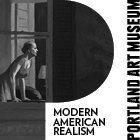 |
 |
 |
 |
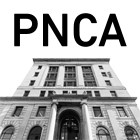 |
 |
 |
 |
 |
 |
 |
 |
 |
 |

|
Site Design: Jennifer Armbrust | • | Site Development: Philippe Blanc & Katherine Bovee | |


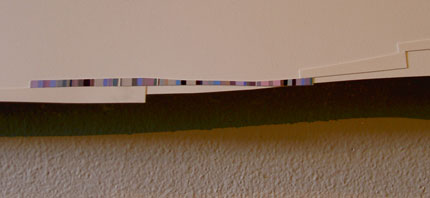
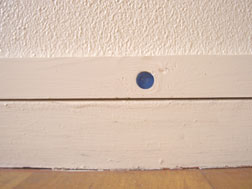
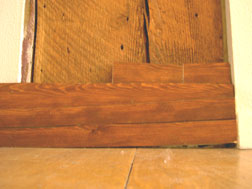
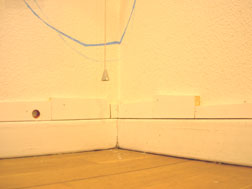
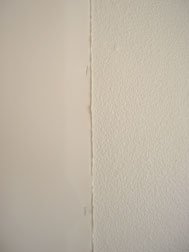
![[TypeKey Profile Page]](http://www.portlandart.net/nav-commenters.gif)